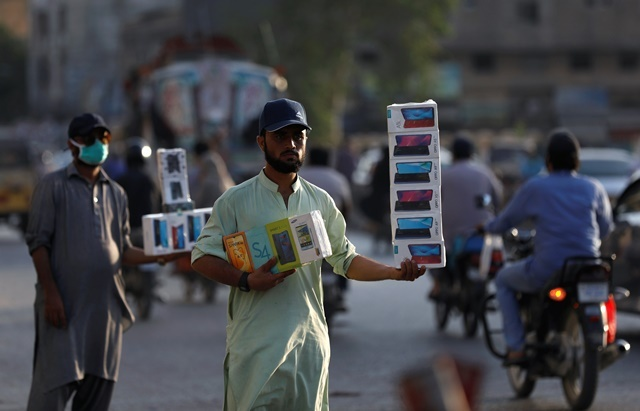
Covid-19: way out for Pakistan
To have an effective system of contact tracing, we need valid epidemiological data of cases
In a recent article in The New Yorker, Paul Farmer, a renowned author who has worked in major epidemics, has discussed the concept of “clinical nihilism”. That happens when the number of serious patients overwhelms the health system and doctors feel they can’t treat them. However, Covid-19, he mentions, has given rise to “containment nihilism” at government levels. From the US to developing countries, many feel they can’t control the pandemic and are quietly hoping for herd immunity. It looks like we are no different in Pakistan.
The question is that with this huge number of active cases how to deploy any control strategy except trying for lockdowns. This is also the most popular question on all talk shows and guests are entrenched according to their party lines. Lockdowns are an effective but blunt weapon which also destroys national economies (as described by US CDC ex-director Tom Frieden). Now, most global health experts have rejected these dichotomies of lockdown vs no lockdowns and are coming up with ideas of safe openings of economies. Lockdowns are supposed to give public health departments a time window of reduced transmission so they can identify and disrupt active transmission of virus in the community. This is also an opportunity to enhance the health system capacity for sicker patients. If we don’t do these then the lockdown has limited value and cases will return once it’s lifted. But uncontrolled movements and interactions of society also mean a huge spike in cases. So now there is a near unanimous consensus on “contact tracing and testing” to guide the decision-making process irrespective of whether there is a lockdown or not.
To have an effective system of contact tracing, we need valid epidemiological data of cases. Unfortunately, Pakistan does not have that. We have daily numbers of tested and positives, not surveillance data. We don’t know if cases in a city are linked to each other (clusters) or not. That is the first important step in epidemic control. The more linkages we find of cases controlling its spread will be easier. For this we need to know when each case got the first symptom. We know when they got tested but not when they got sick and that is critical information for an epidemic control which is missing from NCOC data. Once we start tracing contacts of cases and testing them, we will be able to identify asymptomatic cases and put the noose around active transmissions.
But how can we do that with so many new cases? All outbreaks are local so we need to assign teams of epidemiologists at the city level and focus on disease spread in these communities. That will give us more practical numbers to work with than a central approach. Contact tracing is an art of communication to get the trust of the patients and their communities. Previously, I headed the US CDC and Government of Pakistan’s collaborative programme to train about 250 field epidemiologists to respond to any outbreak or pandemic. They are all government employees across Pakistan in different health departments and armed forces. They are trained for this and have won many awards in outbreak investigation and control. However, Pakistan has not been able to utilise this workforce. In some provinces they were the first to respond, collecting data needed for control. But soon they were sidelined and those who had never managed any outbreak started running the show. But we can still change the course if we really mean business. “The right person for the right job” in a pandemic could be a life saver for our nation!
Published in The Express Tribune, June 27th, 2020.
Like Opinion & Editorial on Facebook, follow @ETOpEd on Twitter to receive all updates on all our daily pieces.










COMMENTS
Comments are moderated and generally will be posted if they are on-topic and not abusive.
For more information, please see our Comments FAQ